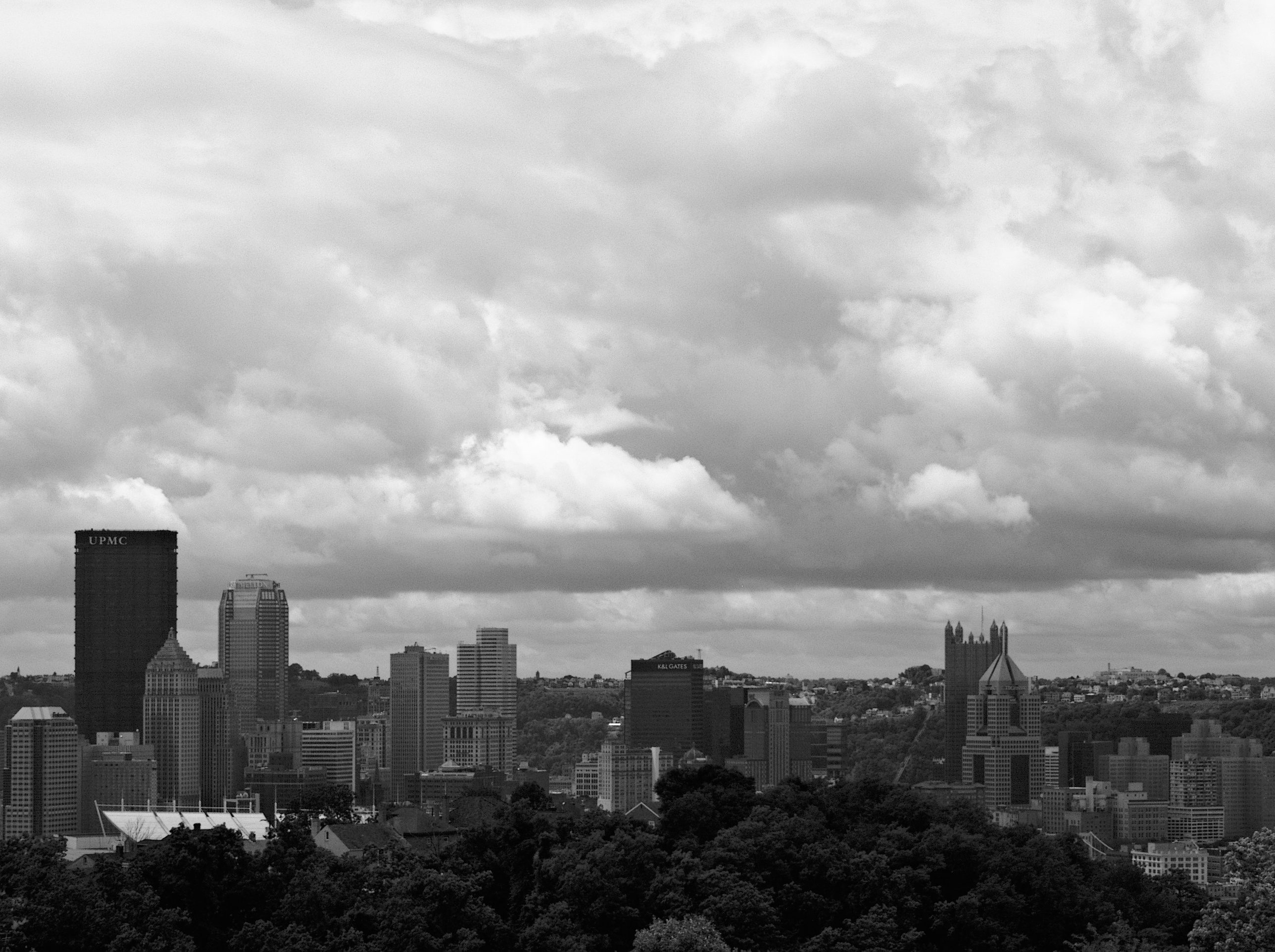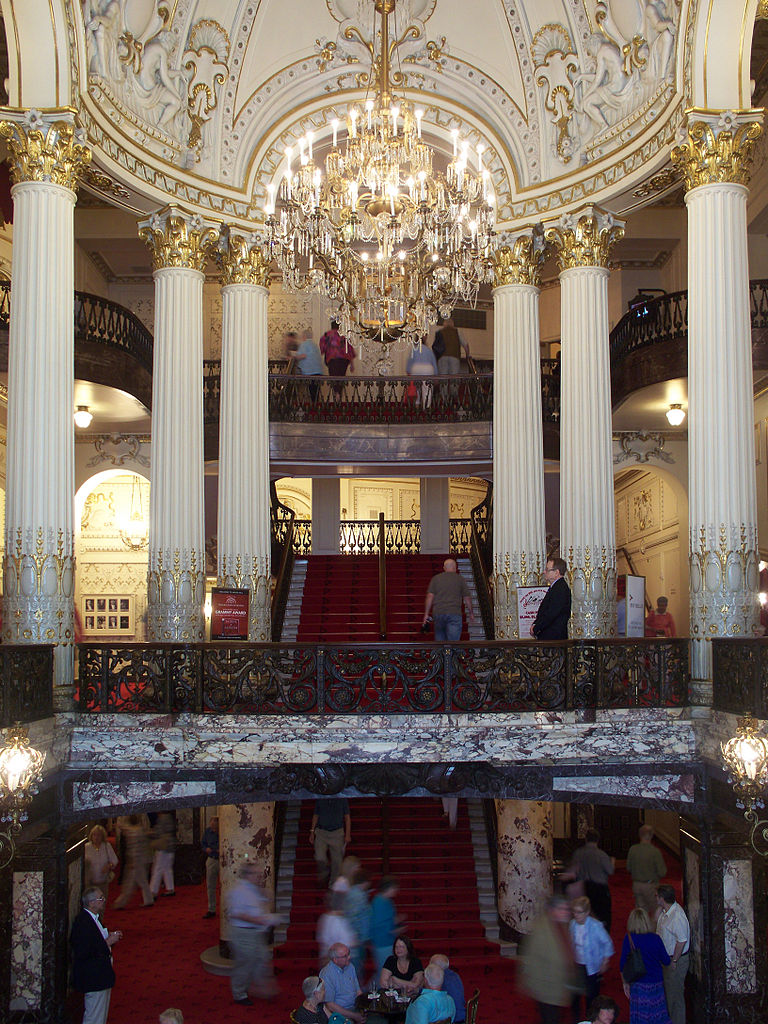We have had some very artistic clouds today. This is the view from Spring Hill.
-
Artistic Clouds
-
The Tower at PNC Plaza

“Earth’s greenest skyscraper” is getting closer and closer to completion. Here we see it in its current state.
Camera: Canon PowerShot S45.
-
Try Street Terminal Building

Built in 1921 for the Keystone Grocery and Tea Company, a grocery chain that did not live a long life (Father Pitt has not been able to find any reference to it after 1927), this is now Shannon Hall, student housing for the Art Institute of Pittsburgh. It is a fine example of how a utilitarian building can be made, if not beautiful, at least not ugly, by well-worked-out proportions and a tasteful choice of materials.
-
Two Gateway Center and the Three Rivers Arts Festival

“Towers in a Park” was the ideal urban paradise of the International Style architects. It seldom worked well, and Father Pitt will tell you why: because the architects concentrated on the towers, and neglected the park. Gateway Center is one of the few really successful towers-in-a-park developments, and it is successful because the park is so attractive—benches everywhere, beautiful landscaping, and (of course) the vendors’ tents of the Three Rivers Arts Festival every June.
-
A Railing in Heinz Hall
-
Wood Street Subway Station and Wood Street Galleries

This building now houses the Wood Street station on the ground floor (and below, of course) and the Wood Street Galleries, a free museum of installation art, on the upper floors. It was put up for the Monongahela National Bank, and the architect was Edward Stotz, who also gave us Schenley High School—another triangular classical building. It makes one wonder whether Mr. Stotz printed “Specialist in Triangles” on his business cards.
The elevator towers at the corners are later additions. They make a mess of the carefully worked out proportions of the building—Father Pitt thinks they make the whole structure look a bit like a fat rabbit—but at least they are done with similar materials.
Camera: Kodak EasyShare Z1485 IS.
-
The Grand Staircase in Heinz Hall
-
Standing at the Window
-
Federal Reserve Bank Building

Three of our greatest Art Deco buildings are lined up in a row on Grant Street: the Koppers Tower, the Gulf Tower, and this magnificent deco-fascist composition by the Cleveland architects Walker and Weeks. This image is put together from six separate photographs, so it is huge if you click on it; there are some small stitching errors, but overall it looks very much like the architects’ original rendering.
-
Skyline at Sunset from Schenley Park







